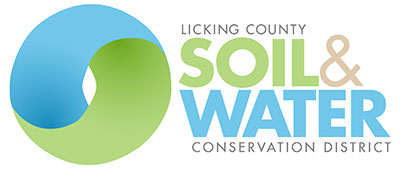Since 1944, Licking County Soil & Water Conservation District exists to promote wise use of our land and water. During those 75 years, Licking Soil & Water has worked with countless landowners to manage and protect natural resources on public and private lands. This year, for our 75th birthday, Licking Soil & Water is reflecting on our history in and impact on Licking County. Below is Part Three of a four-part series celebrating our legacy.
Conservation politics and legislative action dominated the 1970s. Although the federal Clean Water Act of 1972 only focused on point source pollution from industry and municipal sources, Licking Soil & Water prepared for the inclusion of non-point source pollution from farms and other land-disturbing operations such as construction sites. In 1971, when the Clean Water Act was still being debated in the US Congress, Ohio Senate Bill 305 committed soil and water conservation districts to administer agriculture pollution and urban sediment pollution programs.
The Agricultural Nonpoint Pollution Abatement Program focused on four types of potential pollutants: agricultural erosion, agricultural chemicals, animal wastes and air pollution. Licking Soil & Water took a proactive approach and educated landowners with field days and outreach. The tagline keep it under cover! FOR LAND’S SAKE! was used on billboards to promote cover crops in the mid-70s.
The Urban Sediment Pollution Abatement Program’s development was challenging due to diverse voices and concerns of excessive burdens on the construction industry. The intention of pollution abatement was to protect soil and water resources, but additional permit delays and added costs of construction were valid issues that Licking Soil & Water helped to address.
In 1975, Licking Soil & Water led the way in developing a detailed Soil Survey along with the Soil Conservation Service and support from the Licking County Commissioners. This intense undertaking took 10 years of soil scientists walking the county, noting soil types on the 1940 aerial maps and creating the book Soil Survey of Licking County, published in 1985.
Legislation in the 80s impacted Licking Soil & Water’s work and relationships with federal, state and local governments. The 1985 Farm Bill introduced Sod Buster and Swamp Buster provisions, the Conservation Reserve Program (CRP), and the Highly Erodible Lands (HEL) management program.
The 1987 amendments to the federal Clean Water Act set in motion the Municipal Separate Storm Sewer (MS4) program requiring cities to manage stormwater. It also created a federal fund to control nonpoint source pollution called 319. Using 319 funds in the 90s, Licking Soil & Water offered landowners free soil tests. As part of the 319 grant, education efforts promoted the importance of using soil test results to make wise land use decisions.
With additional responsibilities, the Licking Soil & Water team grew. At the beginning of the 70s, Licking Soil & Water employed two people, Gordon Postal, Executive Secretary and Jackie Hunter, Office Secretary. By the end of the 90s, there was a team of 6 conservation professionals led by Jim Kiracofe as District Program Administrator.



